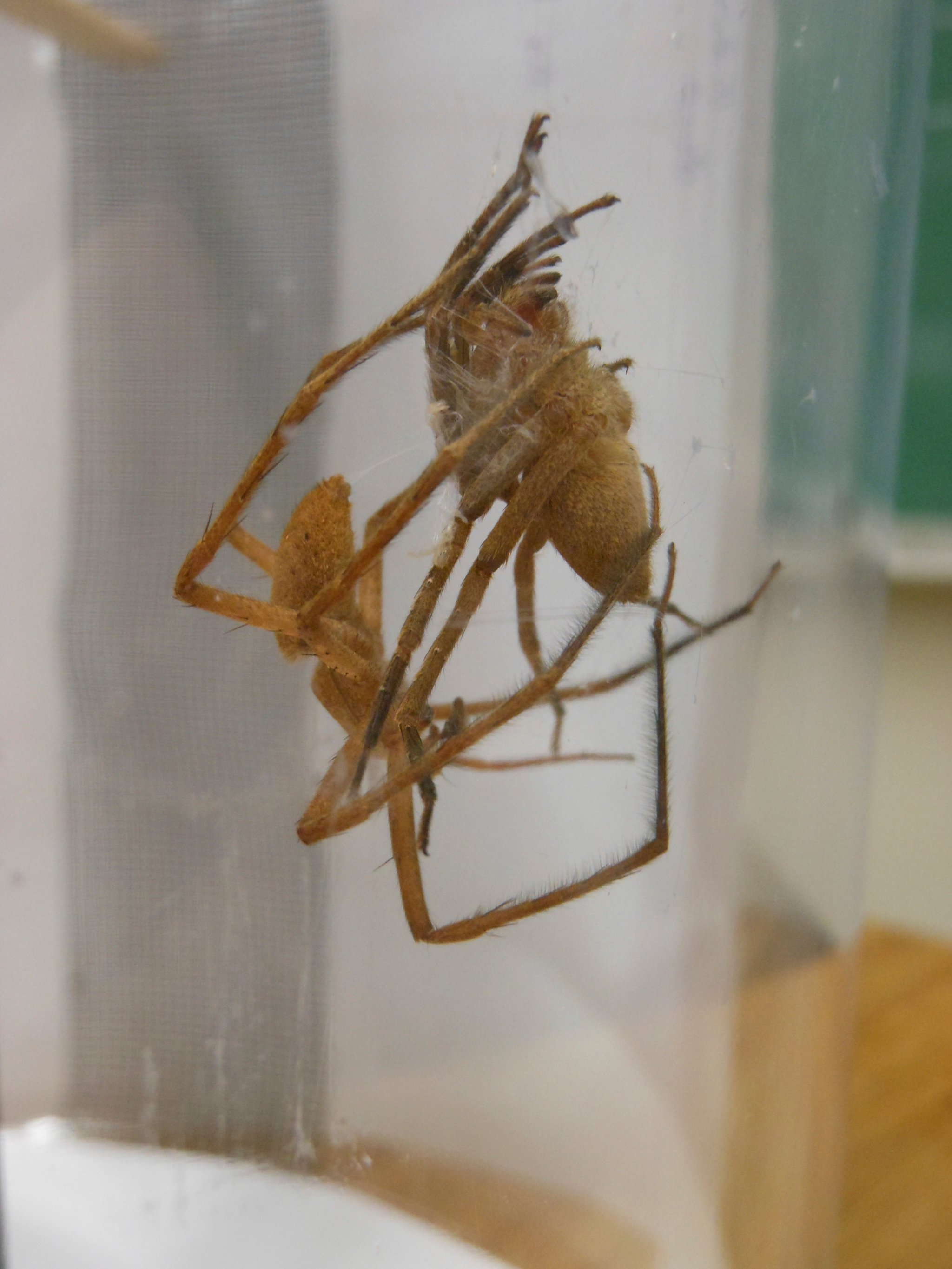

Male spiders sometimes practice bondage during sex, wrapping the legs of their mates with silk during trysts to prevent the females from cannibalizing them, researchers say.
Black widows and many other kinds of spiders are infamous: Their females are the deadlier of the species, devouring males before, after or even during sex. In these species, males have often devised a number of tricks to survive these dangerous liaisons, such as rendering females unconscious with knockout gas.
Previous research suggested that male nursery web spiders (Pisaurina mira) might have an unusual way of protecting themselves from sexual cannibalism — they tie up females with silk before and during sex. Scientific descriptions of the encounters read a bit like excerpts from an arachnid version of Fifty Shades of Grey.
First, male nursery web spiders slowly approach females to see if they are receptive. If a female likes her suitor, the spiders next play a little footsie, with the male gently touching his front legs to her hind legs. After this foreplay, they hurry off to a place where they can both dangle freely upside-down on threads of silk. The male then wraps the female’s legs in a veil of silk, cradles her with his legs, and enters the female. When the female finally gets fidgety, the male retreats to safety while she frees herself.
Until now, scientists had not directly tested the idea that this bondage reduced the risk of sexual cannibalism. To see if these restraints protected the males from the females, behavioral ecologist Alissa Anderson and her advisor Eileen Hebets at the University of Nebraska, Lincoln, used a silicon adhesive to seal the spinnerets of 16 male spiders so they could not spin out threads of silk. They next exposed these arachnids and 15 male spiders whose spinnerets were not sealed to females of random sizes.
The scientists found that relatively large males were more likely to mate than their smaller counterparts, and less likely to be eaten before sex. Regardless of size, males that could wrap up females in silk were roughly seven times less likely to be cannibalized during or after sex, and about seven times more likely to enter females twice.
The researchers are continuing to work “on teasing apart the potential costs and benefits of copulatory silk wrapping for both males and females in an effort to understand the current function and the evolutionary history of this behavior,” Anderson says.
Anderson and Hebets detailed their findings online in the journal Biology Letters.
